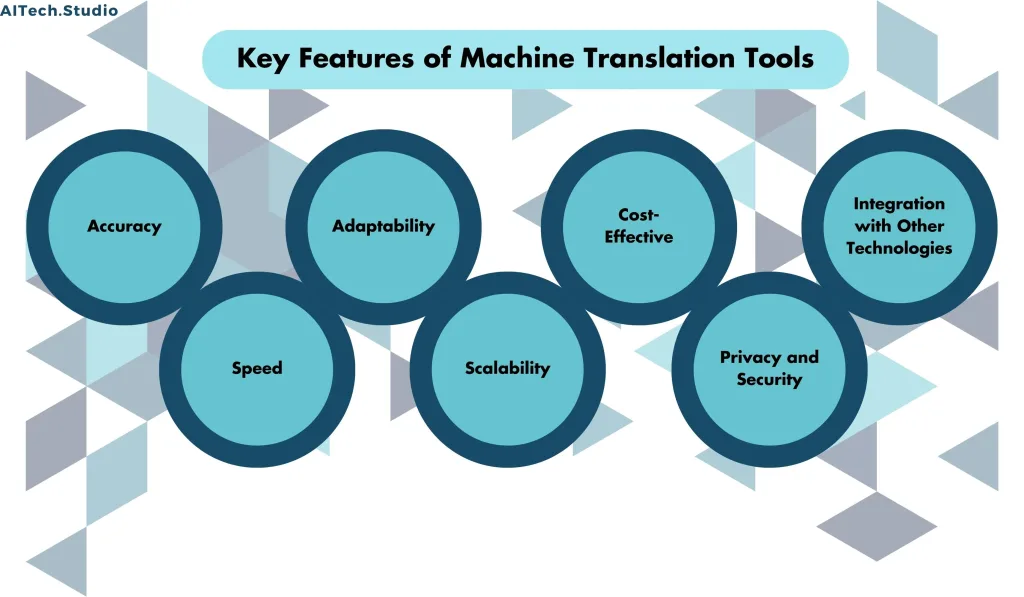It has revolutionized the way we overcome language barriers in today’s interconnected world. It has become an indispensable tool in our lives, facilitating seamless communication with people from different countries. Nevertheless, language barriers frequently impede effective communication, leading to miscommunication and misunderstandings. To address this issue, machine translation steps in to come to the rescue. Therefore, this guide aims to offer a comprehensive understanding of machine translation, encompassing its diverse types, advantages, and disadvantages. By delving into the intricacies of machine translation, we can empower ourselves to overcome language barriers and promote meaningful global communication.
What is Machine Translation?
Machine Translation is the practice of converting text from one language to another with the help of software programs. It falls under the realm of intelligence, where computers are trained to understand and interpret languages like humans do. This method proves to be quick and effective in translating volumes of text making it a valuable asset, for businesses, governments, and individuals alike.

Types of Rule-based,Statistical&Neural Machine Translation
There are three types of Machine Translation:
- Rule-based Machine Translation
- Rule-based Machine Translation, also known as RBMT, is a traditional approach to Automated translation that uses rules and dictionaries to translate text.
- The number of rules and dictionaries available limits the effectiveness of rule-based Automated translation, despite its known accuracy.
- Statistical Machine Translation
- Statistical Machine Translation, also known as SMT, is a data-driven approach to Automated translation that uses statistical models to translate text.
- Linguists and analysts analyze large amounts of bilingual text to identify patterns and generate translation rules in it. Statistical Automated Translation is known for its speed but is less accurate than Rule-based Automated Translation.
- Neural Machine Translation
- Neural Machine Translation, also known as NMT, is a newer approach to Automated translation that uses artificial neural networks to translate text.
- “It involves training a neural network on large amounts of bilingual text to learn the patterns and relationships between words in different languages. Moreover, neural automated translation is known for its accuracy and ability to capture the nuances of language. Additionally, it offers significant advancements in language processing technology. Furthermore, this approach has revolutionized the field of translation, providing seamless communication across language barriers. In addition, it has greatly improved cross-cultural understanding and collaboration. Lastly, it has transformed how we communicate globally, fostering greater connectivity and accessibility.”
How Does Machine Translation Work?
The automated translation system functions by analyzing the source text through a series of rules or algorithms, enabling it to generate the translated text. Initially, the system dissects the source text into separate words or phrases, meticulously examining them for their meaning and context. Subsequently, it actively searches its database for the most suitable translation, carefully considering the meaning and context of the source text.
The Important Key Features of Automated Translation
Several key features of Automated translation are important in the translation process:

- Accuracy
- Automated translation aims to produce accurate translations that convey the meaning of the source text in the target language.
- However, achieving high levels of accuracy can be challenging due to the complexity of human language and the nuances of translation.
- Speed
- It is often faster than human translation, as it can translate large amounts of text in a short amount of time.
- This can be particularly useful in industries such as e-commerce, where large amounts of content need to be translated quickly.
- Adaptability
- MT systems can be adapted to specific domains or industries, which can improve their accuracy and effectiveness.
- For example, an Automated translation system trained in medical terminology may be more accurate when translating medical documents than a general-purpose Automated translation system.
- Scalability
- MT can be scaled to handle large amounts of content, which can be particularly useful for businesses and organizations that need to translate large volumes of content regularly.
- Cost-Effective
- Machine Translation can be a cost-effective solution for businesses and organizations that need to translate large amounts of content.
- While there are costs associated with developing and implementing MT systems, the cost per word of Machine Translation is often lower than the cost of human translation.
- Privacy and Security
- MT can help to maintain the privacy and security of sensitive information, as it can be used to translate content without the need for human translators to have access to that content.
- Integration with Other Technologies
- Moreover, other technologies, such as content management systems and translation memory tools, can seamlessly integrate with Machine Translation, thereby enhancing the efficiency and accuracy of the translation process.
Involved Steps in Machine Translation

- Step 1: Pre-processing
- Pre-processing is the first step in machine translation. In this step, the text or speech to be translated is prepared for machine translation.
- The pre-processing step encompasses various tasks, including sentence splitting, tokenization, and part-of-speech (POS) tagging. Sentence splitting entails the division of the text or speech into individual sentences.
- Step 2: Word Alignment
- Word alignment is the process of aligning the words in the source language with their corresponding words in the target language.
- In Machine Translation (MT), one accomplishes this by employing a bilingual dictionary or utilizing a statistical machine translation model.
- Step 3: Translation
- Relocation is the most important step in machine translation. In this step, the Automated translation system generates the translated text or speech.
- Automated translation systems utilize various techniques to generate translations, including rule-based translation, statistical translation, and neural translation.
- Step 4: Post-processing
- Post-processing is the final step in Automated translation.
- Post-processing includes several tasks, such as re-scoring the language model, checking fluency, and correcting errors. Re-scoring the language model involves re-evaluating the translation based on the context of the entire sentence.
Best Automated Translation Tools
- Pairaphrase
- Pairaphrase is a cloud-based translation management system that helps businesses streamline their translation process.
- It provides a centralized platform for managing translation workflows, automating project tasks, and collaborating with translation teams.
- Pairaphrase supports a wide range of file types, languages, and translation providers, making it a flexible solution for companies of all sizes.
- DayTranslations
- Furthermore, DayTranslations offers a diverse array of AI-powered Natural Language Processing (NLP) products. In addition, within their NLP technology portfolio, they provide an array of functionalities, including automated translation, sentiment analysis, text summarization, and language detection, among others. Moreover, these NLP products offer advanced capabilities, such as automated translation, sentiment analysis, text summarization, and language detection, among others.
- These products help businesses and individuals overcome language barriers by providing real-time accurate and efficient translations.
- Smartling
- Smartling is a cloud-based translation management system that helps businesses manage their translation and localization projects.
- It provides a centralized platform for managing translation workflows, automating project tasks, and integrating with content management systems.
- Smartling uses machine learning and artificial intelligence to streamline relocation workflows, reduce costs, and improve the accuracy and consistency of translated content.
- GlobalLink
- GlobalLink is a cloud-based translation management system that helps businesses manage their translation and localization projects.
- It provides a centralized platform for managing translation workflows, automating project tasks, and integrating with content management systems.
- Amazon Translate
- Amazon Web Services (AWS) developed a cloud-based MT service called Amazon Translate. It allows developers to easily integrate real-time translation capabilities into their applications and websites.
- Amazon Translate uses deep learning algorithms to provide high-quality, accurate translations for text and speech in a wide range of languages.
- Know more Products
Conclusion
Machine Translation is a powerful tool that can help break down language barriers and improve communication between people from different countries.
Despite its limitations, Machine Translation (MT) offers numerous benefits. These advantages include cost-effectiveness, efficiency, and productivity. Furthermore, by adhering to best practices and combining Automated translation with human translation, businesses, and individuals can leverage this potent technology to enhance communication effectively in an interconnected world. Additionally, implementing these strategies can lead to improved language understanding and facilitate seamless global interactions. In conclusion, embracing the use of automated translation can revolutionize communication, thereby fostering greater collaboration and expanding opportunities in today’s fast-paced world.









